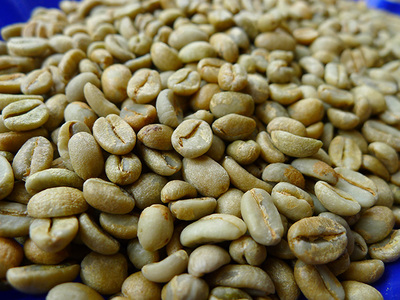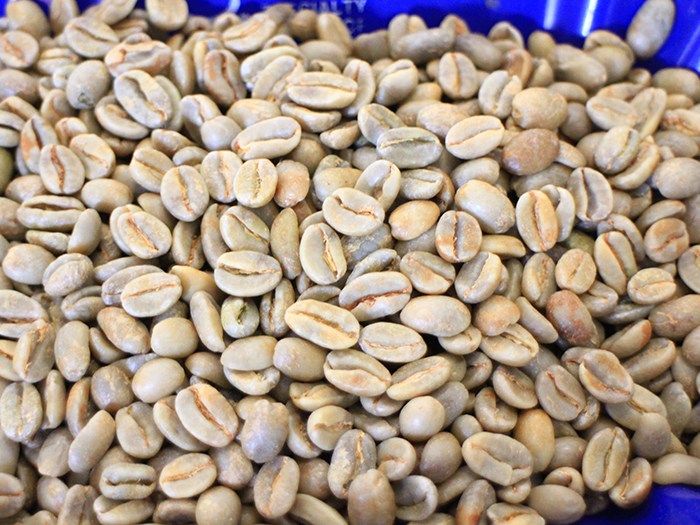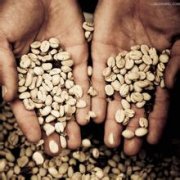Raw bean wholesale price Guatemala wine flavor sun treatment SL28 raw bean home baking Guatemala new
Guatemala is one of the most important coffee-producing countries in Central America. The mountains in Guatemala extend for a long time, and the regional climate varies from one place to another. Therefore, eight coffee-producing areas in Guatemala are created. They are all located on the highland terrain with subtropical climate. The rainfall is abundant and stable. The fertile volcanic ash soil is the perfect environment for coffee trees to grow. Plandel Guayabo is located next to Volcán de Suchitán volcano, which means "guava plain" in Spanish. It is named after guava trees planted in large numbers in the area. The owner of the estate is Benjamin Donado(Mr. Benjamín Donado). The Donado family has been committed to coffee production since 1990 and has been doing so for more than 20 years. Before this, local farmers were unfamiliar with coffee production and could not imagine growing coffee trees at such steep and high altitudes, but it has now been proved that Benjamin made the right choice to produce high-quality, high-quality coffee beans with different varieties and treatments. In the early days of New Oriente in Guatemala, berry buyers regularly came to buy coffee cherries from farmers and resold them to larger middlemen, who resold them to the town of Esquipulas, where they were mixed with other batches to form a large batch of SHB that could not be traced back to origin and sold worldwide under the name New Oriente. With this in mind, Guava Plains is one of the key players in an increasing number of international green bean traders trying to change this dynamic by working with local partners to break the traditional vicious circle by producing green beans with excellent flavor and traceability.
The new coffee beans come from Guava Plain Estate in Guatemala's New Oriental Region, which is named Siyi, which is located in the easternmost part of Guatemala. Unlike Antigua, which is less than an hour's drive from the capital, New Oriental has to drive straight to the easternmost border with Honduras. The 28 kinds of SL sunning and washing batches introduced this time are all customized micro-batches in cooperation with the manor owner. Collaborative microbatches have become an important enabler for the development of today's premium coffee, especially innovative microbatches, by providing incentives for farmers to produce specific batches through prior discussions with farmers and guaranteed price commitments to achieve our goals for flavor, quality and innovation.
Last year, a small amount of washed SL28 was produced in Guava Plain. This year, under the cooperation with traders, a new batch of sun-dried wine fragrance was added, with unique flavor. When cooperating with traders on this series, we also communicated on the spot about the harvesting standards and sun-dried treatment methods (such as turning and drying days). From the results, it can be said that it is a very happy harvest. Especially SL28 is still rare in Central America.
Sunlight: pineapple, melon, dried apricot, sugared lemon peel, bordeaux wine, green tea and cinnamon spice, rich sweetness and smoky plum aroma throughout.
Country: Guatemala
Production area: New Oriental
Manor: Guava Plain Manor
Producer: Mr. Benjamin Donado
Treatment method: wine fragrance sun treatment
Breed: SL28
Altitude: 1675 m
Flavor: pineapple, dried apricot, red wine

Important Notice :
前街咖啡 FrontStreet Coffee has moved to new addredd:
FrontStreet Coffee Address: 315,Donghua East Road,GuangZhou
Tel:020 38364473
- Prev

Colombia Santa Rita Coffee Green Beans Andes Micro-production washed high quality imported green beans
The history of coffee cultivation in Colombia can be traced back to the Spanish colonial era in the 16th century. There are also many sayings about the history of coffee in Colombia: First, it is said to have been transmitted from the Caribbean island of Haiti via El Salvador in Central America. Second, coffee beans were first introduced into Colombia in 1808 by a priest from the French Antilles via Venezuela. one of
- Next

Ninety + levelup
Level Up is a sub-brand of Ninety Plus, a boutique raw bean processing company, which is a series of Ethiopian raw beans jointly launched by the company and raw bean trader Bodhi Leaf. The bean name is not named after the producing area, but after the bean flavor. The name of the bean is the local language of Ethiopia and is a clear description of the flavor of each bean.
Related
- Detailed explanation of Jadeite planting Land in Panamanian Jadeite Manor introduction to the grading system of Jadeite competitive bidding, Red bid, Green bid and Rose Summer
- Story of Coffee planting in Brenka region of Costa Rica Stonehenge Manor anaerobic heavy honey treatment of flavor mouth
- What's on the barrel of Blue Mountain Coffee beans?
- Can American coffee also pull flowers? How to use hot American style to pull out a good-looking pattern?
- Can you make a cold extract with coffee beans? What is the right proportion for cold-extracted coffee formula?
- Indonesian PWN Gold Mandrine Coffee Origin Features Flavor How to Chong? Mandolin coffee is American.
- A brief introduction to the flavor characteristics of Brazilian yellow bourbon coffee beans
- What is the effect of different water quality on the flavor of cold-extracted coffee? What kind of water is best for brewing coffee?
- Why do you think of Rose Summer whenever you mention Panamanian coffee?
- Introduction to the characteristics of authentic blue mountain coffee bean producing areas? What is the CIB Coffee Authority in Jamaica?

